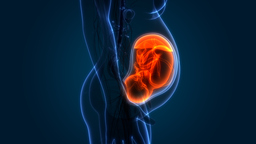Updated Non-Invasive Cervical Cerclage
TECHNOLOGY NUMBER: 2021-392

OVERVIEW
A non-invasive cervical cerclage device to prevent premature birth or pregnancy loss- Useful for pregnant mothers with cervical insufficiency or short cervix syndromes
- Higher efficacy preventing prematurity than progesterone formulations
BACKGROUND
About 10% of babies born in the United States are born preterm, defined as delivery prior to 37 completed weeks of pregnancy. Painless dilation of the cervix before 37 weeks of pregnancy is called "cervical insufficiency" and is a risk factor for pregnancy loss and preterm birth. Women with a "short cervix" in pregnancy are also at risk for preterm birth. The current "gold standard" treatment is an invasive surgical procedure done under regional or general anesthesia that allows the placement of suture in a purse-string fashion into the cervical tissue and tied down to keep the cervix closed and provide structural support to prolong pregnancy. Due to the invasive nature of this procedure, it puts the patient at risk of rupturing the fetal membranes, vaginal bleeding, and infection, any of which can lead to preterm delivery or pregnancy loss.
INNOVATION
A University of Michigan researcher has developed a non-invasive suture deployment device that delivers structural support to the cervix in women with cervical insufficiency and short cervix. The device helps patients avoid the risks of an invasive surgery while still supporting the pregnancy and keeping the cervix from opening or shortening prematurely. Women with a history of cervical insufficiency or short cervix will be candidates for the device. The device will be applicable to pregnancy care in nations worldwide. The device exerts 5-6 pounds of pressure on the cervix to support it structurally, achieving the same pressure exerted by existing surgical techniques, though without space restrictions. The device also provides feedback to the user when it has exerted maximal tension, using a red and green indicator, and it is inhibited from exerting excessive pressure through a safety mechanism. It eliminates the need to take a patient to the operating room or to place her under anesthesia, limiting patient risk and diminishing healthcare costs.